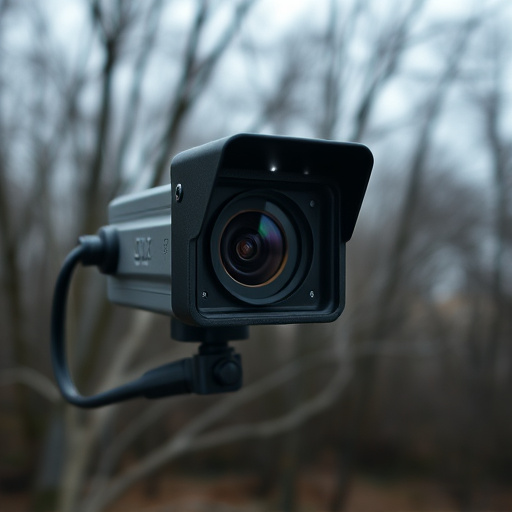The Remote Viewing Nanny Surveillance System offers a discreet way to monitor children's activities remotely using high-res cameras with thermal and night vision, AI for behavior analysis, and advanced blending techniques to avoid drawing attention. However, it navigates legal and ethical challenges by adhering to local laws, prioritizing transparency, and implementing robust safeguards like trigger alerts, secure connections, and prompt data deletion.
Surveilling your home or business has never been easier with advancements in technology, particularly remote viewing systems. This comprehensive guide delves into the world of remote viewing nanny surveillance systems, exploring cutting-edge techniques for camouflaging surveillance equipment. From understanding the intricacies of remote viewing technology to navigating legal and ethical boundaries, this article provides valuable insights for effective yet responsible monitoring. Learn how to implement these advanced strategies seamlessly while preserving privacy.
- Understanding Remote Viewing Technology for Nanny Surveillance
- Camouflaging Surveillance Equipment: Advanced Techniques
- Legal and Ethical Considerations in Nanny Surveillance
- Maintaining Privacy: Tips for Using a Remote Viewing Nanny Surveillance System Effectively
Understanding Remote Viewing Technology for Nanny Surveillance
Remote viewing technology offers a discreet and innovative approach to nanny surveillance, allowing parents to monitor their children’s activities from a distance. This cutting-edge system enables real-time observation through advanced imaging and data analysis techniques. By utilizing specialized equipment and software, caregivers can remotely access live feeds, ensuring constant supervision without raising unwanted attention.
The remote viewing nanny surveillance system leverages high-resolution cameras with thermal and night vision capabilities, making it effective in various environments. These devices can capture clear images and videos even in low-light conditions or complete darkness, providing comprehensive monitoring. Additionally, the integration of AI algorithms enables intelligent analysis, allowing the system to detect unusual behavior patterns or potential hazards, thus enhancing safety measures for children under care.
Camouflaging Surveillance Equipment: Advanced Techniques
Camouflaging surveillance equipment, especially in residential settings like homes or offices, requires a blend of strategic placement and innovative techniques to maintain privacy while gathering intelligence. For instance, integrating Remote Viewing Nanny Surveillance Systems into everyday objects can be an effective way to conceal monitoring activities. By disguising cameras as common household items like fire alarms, power outlets, or even artificial plants, users can maintain a level of discretion while still enjoying the benefits of constant observation.
Advanced techniques go beyond simple disguise. They involve employing low-light cameras with IR capabilities for night vision, ensuring seamless integration into existing lighting systems. Additionally, using sophisticated image processing algorithms to blend captured footage with ambient surroundings in real time makes surveillance equipment almost invisible. These advanced camouflage methods not only protect the privacy of individuals but also enhance the overall aesthetic of a space, making it easier to overlook the presence of monitoring devices.
Legal and Ethical Considerations in Nanny Surveillance
In the realm of remote viewing nanny surveillance systems, it’s paramount to navigate the intricate tapestry of legal and ethical considerations. As technology advances, enabling discreet and advanced methods of monitoring, society grapples with balancing privacy rights and safety concerns. This delicate equilibrium is especially critical when it comes to Nanny Surveillance, where a parent’s desire for reassurance must be balanced against an individual’s right to privacy.
Using such systems for remote viewing requires careful adherence to local laws and regulations governing surveillance. Unauthorized installation or operation can result in serious legal repercussions. Furthermore, ethical guidelines mandate transparency in the monitoring process, ensuring all parties involved are aware of the surveillance activities. Privacy advocates argue that Nanny Surveillance can infringe upon an individual’s indelible right to personal space and autonomy, highlighting the necessity for stringent safeguards and oversight mechanisms.
Maintaining Privacy: Tips for Using a Remote Viewing Nanny Surveillance System Effectively
When employing a remote viewing nanny surveillance system, prioritizing privacy is paramount to ensure responsible and effective use. It’s crucial to be transparent with all involved parties, especially children and employees, about the monitoring in place. Clear communication fosters trust and understanding. Additionally, review and adhere to local laws regarding video surveillance to avoid legal pitfalls.
To maximize privacy, utilize advanced settings offered by your remote viewing system. This includes setting specific trigger alerts instead of constant live streaming. Only record when certain activities occur, preserving moments that aren’t relevant to the surveillance purpose. Employing secure, encrypted connections for data transmission safeguards private information from unauthorized access. Finally, store recordings securely and delete them promptly after they’re no longer needed to maintain a safe and private environment.
The integration of remote viewing technology into nanny surveillance systems offers unprecedented convenience, but it also raises significant legal and ethical concerns. By understanding the advanced techniques for camouflaging equipment and adhering to privacy best practices, parents can leverage these innovative tools responsibly. A well-implemented Remote Viewing Nanny Surveillance System can provide peace of mind while respecting the boundaries necessary to foster trust between caregivers and children.
